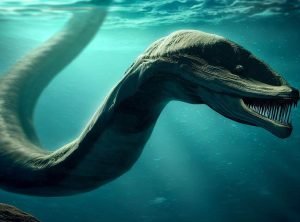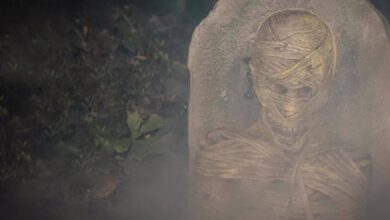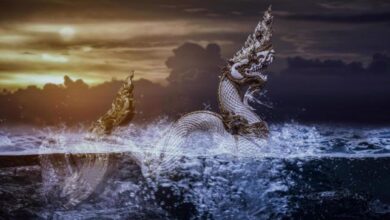In 1965, pilots of the deep-sea submersible saw a real plesiosaur

 In 1965, two men aboard the Alvin submersible descended over a mile into the Atlantic Ocean. And there they saw a living creature that was very similar in appearance to a plesiosaur.
In 1965, two men aboard the Alvin submersible descended over a mile into the Atlantic Ocean. And there they saw a living creature that was very similar in appearance to a plesiosaur.
This incident happened near the Bahamas and is still an unsolved cryptozoological mystery. One of the pilots said that the creature was definitely a reptile with a very long neck.
Some researchers believe that it could be the legendary sea serpent, but the descriptions of eyewitnesses point more to a sea lizard from the order of plesiosaurs that has survived to this day.
Marvin McKames and Bill Rainney were the engineers who designed and piloted the Elvin submersible themselves. The dive in the Bahamas was their first dive.
They saw a strange long-necked creature in a place called the “Tongue of the Ocean” – this is a deep depression between the islands of Andros and New Providence.
Early reports of the Alvin sea serpent were highly laconic: McCamis was originally quoted as saying “[t]hen I seen this monster or somethin’. I turned around sharply and it’s gone. Kind of shook me up. This was a living creature … I seen at least forty or fifty foot of it.”

McCamis later gave a detailed description of this monster to the Fortean researcher Charles Berlitz, who referred to it in several of his books, always giving the year of the sighting as 1969. Berlitz published McCamis’ first-hand account in his book Without a Trace (1977).
“We were down about 5000 feet and then I went down into a crevasse about 300 feet deeper under a slight outcrop. We went deeper because the cable we were following spanned the crevasse. It was right there that I spotted it. The first thing I noticed was the movement.
“I thought we were moving along the cable and checked for drift but found that the sub was stationary and that it was the object that was moving. It then occurred to me that perhaps it was a utility pole, especially because of its thick shape.
“I swung the sub in an arc to get a better view along the cable or pole or whatever it was, when I was astonished to see a thick body with flippers, a long neck, a snakelike head with two eyes looking right at us. It looked like a big lizard with flippers – it had two sets of them.
“Then it swam upwards with its back turned before we could get the cameras angled. They were set to photograph 15 to 25 feet in front of the submarine and the thing had already swum out of the camera angle but was still around.
I didn’t like the way things were happening, so I came up. I couldn’t believe what I was seeing but I didn’t want to hang around.”

McCamis recorded the sighting in the submersible’s “wet log,” but was later told that the passage had been removed from the final version, and, with no proof of what he saw, he became hesitant to talk about his sighting.
One of Berlitz’s colleagues, J. Manson Valentine, an entomologist and artist interested in “esoteric archaeology,” drew a plesiosaur for McCamis, who identified it as “exactly what [he] saw.”
In 1999, cryptozoologist Scott Mardis contacted McCamis, who confirmed the sighting, but claimed that Berlitz got the date wrong; according to him, the observation occurred around July 1965, not 1969, a year in which Alvin was out of commission.
In the decades that followed, cryptozoologists and regular zoologists argued many times over what exactly McKames and his colleague might have seen. Some of them believed that a rare long-necked seal fell into their field of vision, others were sure that it was really a plesiosaur that had survived to our times.
Modern cryptozoologist Karl Shuker considers the observation of “Alvin” extremely valuable. Firstly, due to the fact that both eyewitnesses were highly qualified engineers, and not some crooks out there, thirsting for fame in the press.
And secondly, they saw the alleged “sea serpent” or plesiosaur in its native element – deep under water, and not on the surface, as in most cases of observation.
Shuker is in the group that believes that a real plesiosaur was seen from the Alvin, and he considers this case one of the strongest evidence that such marine cryptids are real.
Greetings, explorer! We thank our supporters from the bottom of our hearts for their generous donations that keep anomalien.com alive. If you’d like to join the cause and help us continue to deliver amazing articles, please consider making a donation. Let’s keep the 👽 smiling!Follow us on Instagram, Twitter and Telegram for interesting and mysterious bonus content!




